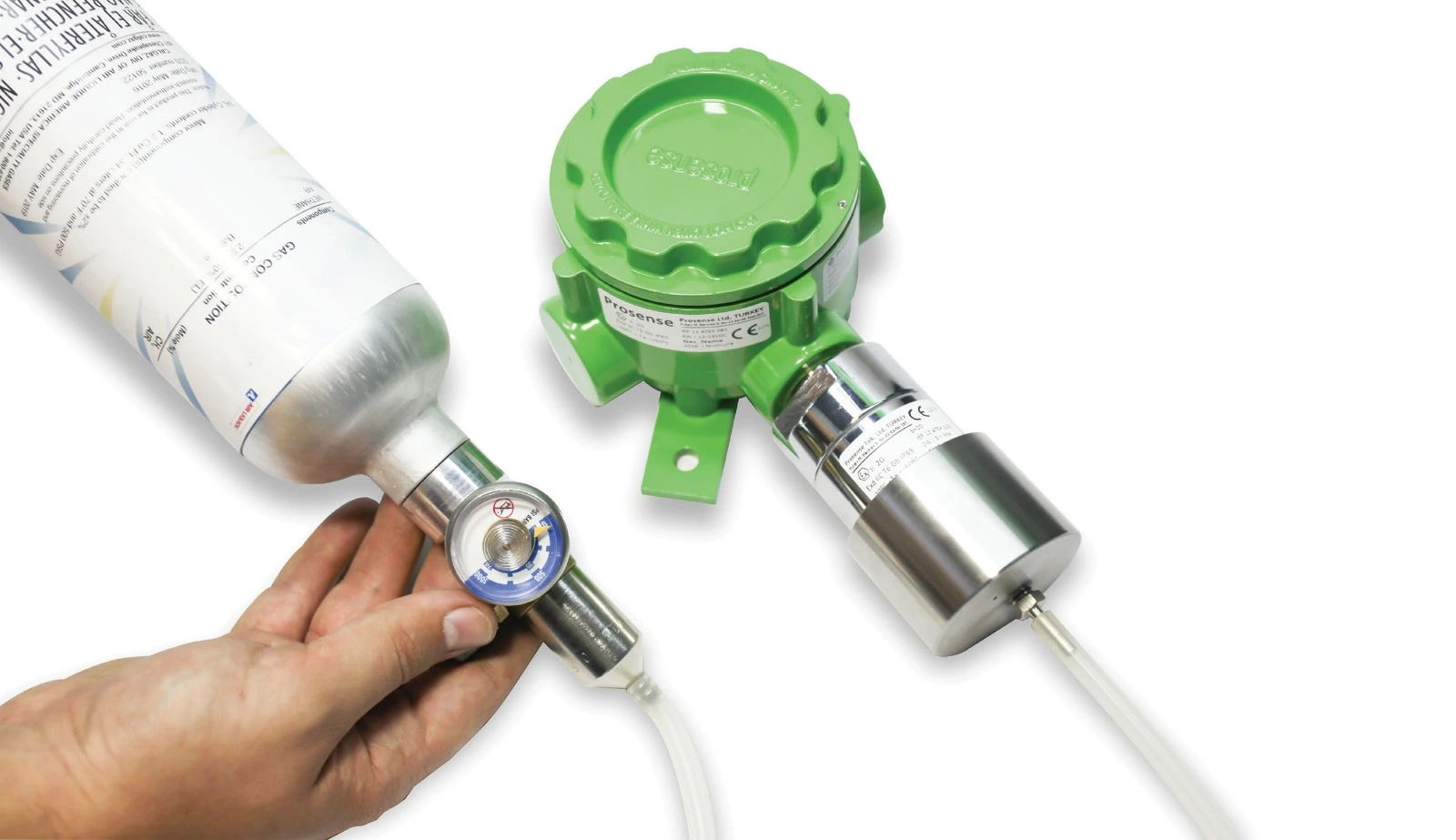Calibration
Calibration is the process of reporting measurement results by comparing a reference gas detector whose accuracy is assured (internationally traceable) and a Gas detector whose accuracy cannot be assured. In order to ensure the accuracy of all measuring devices, calibrations must be made. As required by ISO 9000 or similar standards, monitoring and measuring devices are necessarily calibrated. In particular, the provisions regarding the calibration of gas detectors are stated in the TS EN 60079-29-2 standard, and it is required to be repeated at least once a year.
Calibration frequency may vary depending on various parameters such as the type of equipment used, the physical conditions of the environment used, the gas to be detected and the contaminants in the environment. In special cases, the calibration frequency may need to be repeated 3-4 times a year. All gas detectors produced by Prosense Teknoloji are calibrated and reported in the laboratory environment. Calibration reports are added to the box of each device and can also be sent softly upon request. Prosense uses internationally traceable reference gases for the calibration of gas detectors, and always keeps these gases in its stocks continuously, especially for customer needs.
All gas detectors including both for flammable and toxic gases should have to pass a functional test and calibration every three to twelve months according to, EN 60079-29-2 and EN 60079-17 industrial standards. Tests and recalibration must be done in a maximum 12 months period. The test results and calibration reports should be recorded in maintenance books. Detector inspection and test procedure should be prepared to make sure the detectors functioning correctly. The procedures should include daily, weekly and monthly check activities depending of the environmental and process conditions. The gas used for the test has the correct gas concentration, and that it is within the validity date specified by the supplier. Flammable gas detectors designed to work 0-100 % LEL range cannot handle high gas concentrations. Exposing equipment to high gas concentrations can reduce the life of the sensor and have an unreversible negative impact on the sensing mechanism. It is recommended to use test gas with between 25 to 75 %LEL concentration of the target gas that the detector produced. It might be necessary to perform a bump test to make sure detectors responding correctly to test gases. If any detector does not respond to the test gases, it should be removed from the operations and send to service for repair. The detector sensor head should be clean and open to gas diffusion without any obstacle. The sensor head should not be washed with pressurized water or gases.
Operational Life: Catalytic/Pellistor flammable gas sensor made by using the pellistor that suffers from a loss of sensitivity when in the presence of poisons or inhibitors, e.g. silicones, sulfides, chlorine, lead or halogenated hydrocarbons. The pellistor is poison resistant to maximize the operational life of the Catalytic flammable sensor. A typical operating life, subject to the presence of poisons/inhibitors and environment conditions is 60 months. The NDIR (infrared) flammable gas sensor is not affected by the mentioned poisons hence has a longer life span. Pellistor sensors can suffer degradation and shorten the life if powered while exposed to flammable gas concentrations greater than 100% LEL, and also if exposed to high levels of H2S or silicones. The typical life of a toxic gas sensor made by the electrochemical component is dependent on the application, frequency and amount of gas exposure. Under normal conditions (visual inspections every 3 months and test/recalibration every 6 months), the Prosense oxygen and toxic gas detector sensors have an expected life equal to or greater than 24 months. Persistent exposure to high levels of toxic gas can shorten the life of toxic sensors. Toxic sensors may also be cross-sensitive to gases other than their specific target gas, and hence the presence of other gases may cause the sensor to respond.
Sensor Replacement: The Flammable Catalytic and Toxic ECC cells that are used with the Prosense Sensor Head have no serviceable parts. When they have reached the end of their operational life, simply replace the cell. All replacement actions (sensor, sinter, and sensor head) have to be done by Prosense service personnel as it needs some special steps that should be performed in a laboratory environment.
Sinter Replacement: Due to environmental conditions the metal filter - sinter at the sensor head might lose permeability that could negatively impact on sensor performance. For example, if the installation includes cement or similar dust the sinter would block the air/gas entry to the sensor. The sinter should be checked visually and replaced if necessary.

